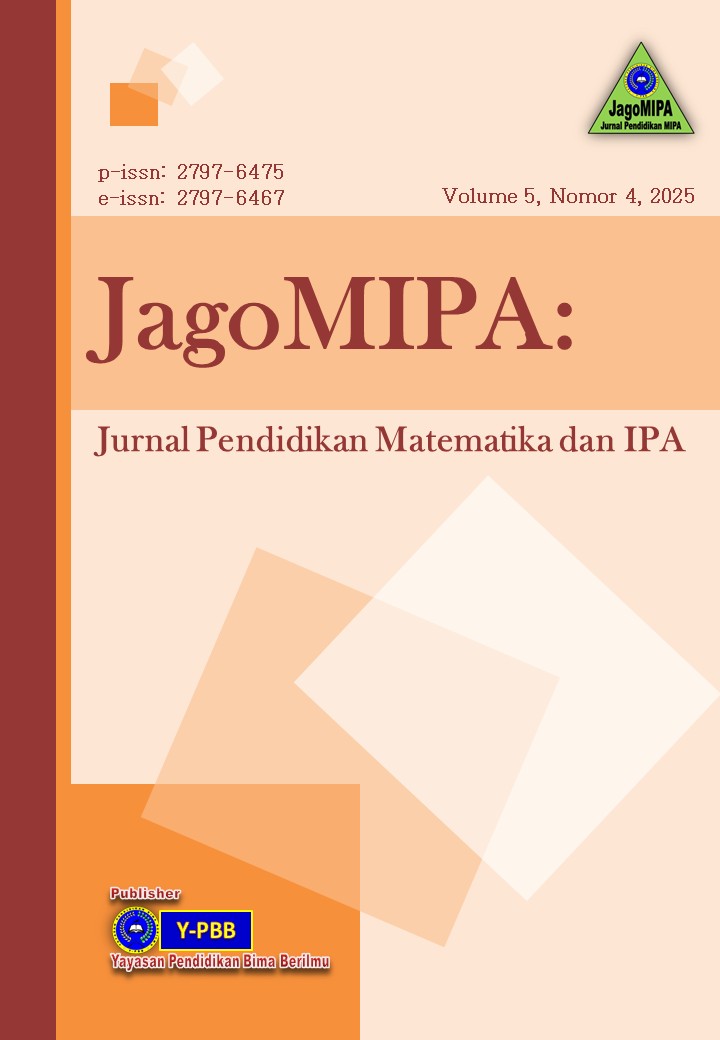Enhancing Learning Autonomy through Heutagogical Flipped Learning: A Three-Semester Longitudinal Study in Indonesian Higher Education
DOI:
https://doi.org/10.53299/jagomipa.v5i4.2807Keywords:
Heutagogical Flipped Learning, Learning Autonomy, Higher Education, Reflective Learning, PedagogyAbstract
This study aims to analyze the effect of implementing Heutagogical Flipped Learning (HFL) on students’ learning autonomy in Indonesian higher education. The research employed a quasi-experimental longitudinal approach with a one-group pretest–posttest design, conducted over three consecutive semesters in the same course within a postgraduate mathematics education program. A total of 93 students as participated in the study. The research instruments consisted of the HFL Implementation Scale and the Learning Autonomy Scale, each comprising 20 items with content validity (Aiken’s V) ranging from 0.84 to 0.94 and reliability coefficients (α) above 0.88. Data were analyzed using descriptive statistics, paired-sample t-tests, simple linear regression, and thematic analysis of reflective interview data. The findings revealed that the implementation of HFL had a positive and significant effect on improving students’ learning autonomy, with an R² value of 0.46 (p < 0.001). The learning effect increased from a medium to a large level across semesters (Cohen’s d = 0.49 → 0.91). The longitudinal trend analysis showed an average increase of 0.22 points in learning autonomy per semester. The interview results supported the quantitative findings, showing that 83% of students expressed satisfaction with the learning process, particularly regarding learning flexibility, responsibility, and peer collaboration, although some faced technical and time-management challenges. Overall, this study confirms that HFL is effective in enhancing students’ learning autonomy and satisfaction in higher education. Its sustained implementation has the potential to foster a culture of self-directed and reflective learning aligned with Indonesia’s digital education transformation agenda.
References
Alias, A. F., & Mohd Matore, M. E. E. (2023). Mathematics Secondary School Teacher Readiness in Applying Heutagogical Approach for Teaching and Learning. International Journal of Academic Research in Progressive Education and Development, 12(1). https://doi.org/10.6007/IJARPED/v12-i1/14794
Blaschke, L. M. (2021). The dynamic mix of heutagogy and technology: Preparing learners for lifelong learning. British Journal of Educational Technology, 52(4), 1629–1645. https://doi.org/10.1111/bjet.13105
Blaschke, L. M., & Hase, S. (2019). Heutagogy and digital media networks. Pacific Journal of Technology Enhanced Learning, 1(1), 1–14. https://doi.org/10.24135/pjtel.v1i1.1
Chen, F., Lui, A. M., & Martinelli, S. M. (2017). A systematic review of the effectiveness of flipped classrooms in medical education. Medical Education, 51(6), 585–597. https://doi.org/10.1111/medu.13272
Gillaspy, E., & Vasilica, C. (2021). Developing the digital self-determined learner through heutagogical design. Higher Education Pedagogies, 6(1), 135–155. https://doi.org/10.1080/23752696.2021.1916981
Halim, Abd., Nur, S., Vega, N. De, Nasta, M., & Nurfadhilah, A. S. (2023). Exploring Heutagogy in Indonesian Higher Education: Cultural Challenges and Advantages in Mobile-Based English as a Foreign Language (EFL) Teaching. VELES (Voices of English Language Education Society), 7(3), 557–571. https://doi.org/10.29408/veles.v7i3.22026
Hammoda, B. (2025). Extracurricular Activities for Entrepreneurial Learning: A Typology Based on Learning Theories. Entrepreneurship Education and Pedagogy, 8(1), 142–173. https://doi.org/10.1177/25151274231218212
Hedar, Y., Tryono, F. X. Y., Ramadhon, S., Priandani, A. P., & Emilzoli, M. (2024). Tren Penelitian Heutagogi Di Pendidikan Tinggi: Sebuah Analisis Bibliometrik. Edutech, 23(3), 319–335. https://doi.org/10.17509/e.v23i3.74885
Herawati, M., Muhid, A., & Hamdani, A. S. (2021). Self-Efficacy, Social Support, Academic Flow, and Math Anxiety among Islamic Senior High School Students. Psympathic : Jurnal Ilmiah Psikologi, 7(2), 315–326. https://doi.org/10.15575/psy.v7i2.8474
Kim, J. (2022). The Interconnectivity of Heutagogy and Education 4.0 in Higher Online Education. Canadian Journal of Learning and Technology, 48(4). https://doi.org/10.21432/cjlt28257
Mutohir, T. C., Lowrie, T., & Patahuddin, S. M. (2017). The Development of a Student Survey on Attitudes towards Mathematics Teaching-Learning Processes. Journal on Mathematics Education, 9(1). https://doi.org/10.22342/jme.9.1.4193.1-14
Nurhajarurahmah, S. Z. (2021). Students’ Multiple Intelligence in Visualization of Mathematics Problem Solving. Journal of Physics: Conference Series, 1752(1), 012063. https://doi.org/10.1088/1742-6596/1752/1/012063
Nurhajarurahmah, St. Z., & Arsyad, N. (2023). Model Pelatihan Berbasis Moral untuk Meningkatkan Kompetensi Profesional Guru (1st ed.). Deepublish.
Stoten, D. W. (2022). Navigating heutagogic learning: mapping the learning journey in management education through the OEPA model. Journal of Research in Innovative Teaching & Learning, 15(1), 83–97. https://doi.org/10.1108/JRIT-07-2020-0038
Tiew, C. C., & Abdullah, M. N. L. Y. (2021). Heutagogy Approach In 21st Century Teaching And Learning: Practices And Challenges In Malaysian Higher Education. Asean Journal of Teaching and Learning in Higher Education, 13(1). https://doi.org/10.17576/ajtlhe.1301.2021.02
Walsh, C., Bragg, L., Muir, T., & Oates, G. (2022). Unleashing Adult Learners’ Numeracy Agency Through Self-Determined Online Professional Development. The International Review of Research in Open and Distributed Learning, 23(3), 240–258. https://doi.org/10.19173/irrodl.v23i3.6046
Downloads
Published
Issue
Section
License
Copyright (c) 2025 JagoMIPA: Jurnal Pendidikan Matematika dan IPA

This work is licensed under a Creative Commons Attribution 4.0 International License.














